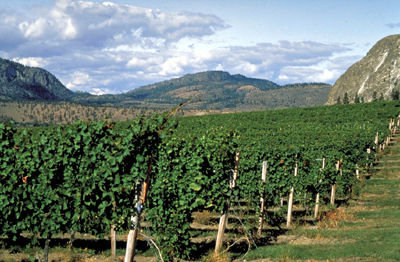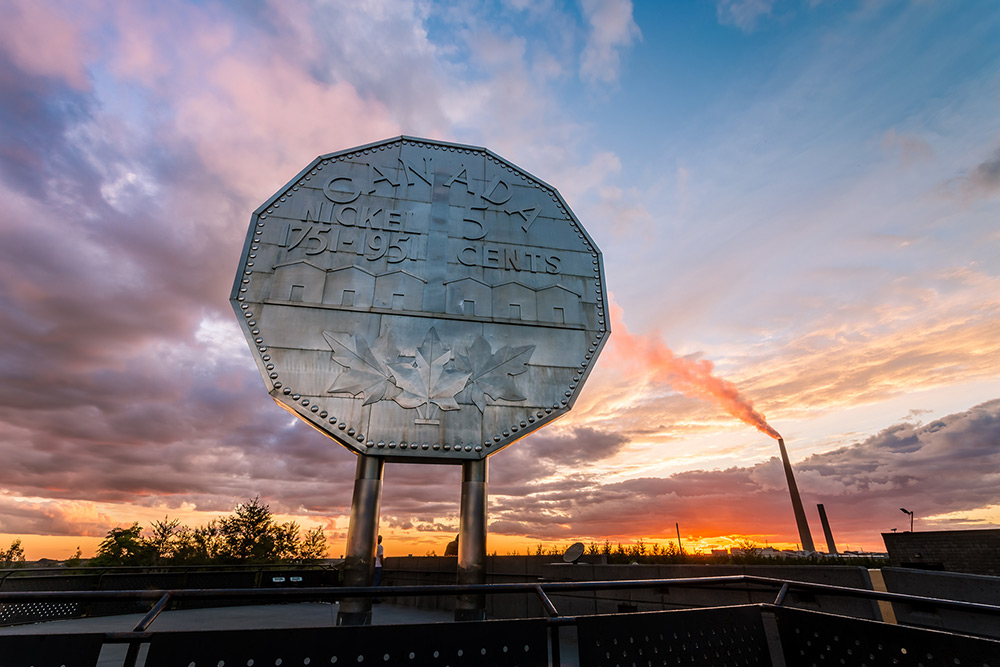Browse "Things"
-
Article
Native Women’s Association of Canada
Founded in 1974, the Native Women’s Association of Canada (NWAC) is an organization that supports the socio-economic, political and cultural well-being of Indigenous women in Canada. Dedicated to the principles of humanitarianism, NWAC challenges the inequalities and discrimination that Indigenous women face by remaining politically engaged in causes such as education, housing, child welfare and more.
"https://d2ttikhf7xbzbs.cloudfront.net/media/media/936c2b99-17d5-42ab-84f2-a309bc3022c9.jpg" // resources/views/front/categories/view.blade.php
https://d2ttikhf7xbzbs.cloudfront.net/media/media/936c2b99-17d5-42ab-84f2-a309bc3022c9.jpg
-
Article
NATO (North Atlantic Treaty Organization)
The North Atlantic Treaty Organization (NATO) was created on 4 April 1949. It was Canada’s first peacetime military alliance. It placed the country in a defensive security arrangement with the United States, Britain, and Western Europe. (The other nine founding nations were France, Norway, Denmark, Belgium, Netherlands, Luxembourg, Portugal, and Italy.) During the Cold War, NATO forces provided a frontline deterrence against the Soviet Union and its satellite states. More recently, the organization has pursued global peace and security while asserting its members’ strategic interests in the campaign against Islamic terrorism. As of 2021, there were 30 member countries in NATO.
"https://d2ttikhf7xbzbs.cloudfront.net/media/new_article_images/NATO/Flag_of_NATO.svg" // resources/views/front/categories/view.blade.php
https://d2ttikhf7xbzbs.cloudfront.net/media/new_article_images/NATO/Flag_of_NATO.svg -
Editorial
NATO: Canada's First Peacetime Military Alliance
The following article is an editorial written by The Canadian Encyclopedia staff. Editorials are not usually updated. On 4 April 1949, in the auditorium of the State Department on Washington's Constitution Avenue, the foreign ministers of Canada, the United States, the United Kingdom, France and eight other countries signed the North Atlantic Treaty.
"https://d2ttikhf7xbzbs.cloudfront.net/media/media/a8f651d1-144a-49a7-af14-dc0c180d3168.jpg" // resources/views/front/categories/view.blade.php
https://d2ttikhf7xbzbs.cloudfront.net/media/media/a8f651d1-144a-49a7-af14-dc0c180d3168.jpg
-
Macleans
Natural Environment
This article was originally published in Maclean’s magazine on June 2, 2003. Partner content is not updated. THIS IS MY medicine cabinet," says Karl Schibli, his ice-blue eyes widening with the excitement of someone about to let a neophyte in on what he already knows. The object of Schibli's focused attention is a red Coleman picnic cooler on a shelf in his barn near Waterford, Ont.
"https://development.thecanadianencyclopedia.ca/images/tce_placeholder.jpg?v=e9dca980c9bdb3aa11e832e7ea94f5d9" // resources/views/front/categories/view.blade.php
https://development.thecanadianencyclopedia.ca/images/tce_placeholder.jpg?v=e9dca980c9bdb3aa11e832e7ea94f5d9
-
Article
Natural Gas in Canada
Natural gas ranks among the fastest-growing energy sources in Canada and is seen by many in the energy industry as a game-changer, a comparatively clean, low-cost and versatile fuel. It can directly generate power and heat and can be chemically altered to produce a wide range of useful commodity chemicals. It burns cleaner and more efficiently than other fossil fuels, releasing significantly fewer harmful pollutants into the atmosphere. Natural gas is colorless, odourless, shapeless, lighter than air and contains a mixture of several hydrocarbon gases, which are organic compounds consisting of some combination of hydrogen and carbon molecules. The primary consumers of natural gas are the industrial (54.1 per cent), residential (26.6 per cent) and commercial sectors (19.3 per cent). Canada is the fifth largest natural gas producer after the United States, Russia, Iran and Qatar. Currently, all of Canada’s natural gas exports go to the United States through a network of pipelines, making Canada the largest foreign source of US natural gas imports. At the end of 2016, Canada had 76.7 trillion cubic feet of proven natural gas reserves and had produced 152 billion cubic metres of natural gas that year. It is forecasted that global natural gas consumption will double by 2035.
"https://d2ttikhf7xbzbs.cloudfront.net/media/new_article_images/NaturalGas/Fig 1.jpg" // resources/views/front/categories/view.blade.php
https://d2ttikhf7xbzbs.cloudfront.net/media/new_article_images/NaturalGas/Fig 1.jpg
-
Article
Natural Regions
Natural regions are intended to describe areas of the Earth's surface which possess similar qualities or attributes. They may refer to either land or water, and can vary in size. The term “natural region” is often used interchangeably with the word “ecozone.”
"https://d2ttikhf7xbzbs.cloudfront.net/media/media/9e60d609-62ab-4e7c-8233-12801bc0f8c1.jpg" // resources/views/front/categories/view.blade.php
https://d2ttikhf7xbzbs.cloudfront.net/media/media/9e60d609-62ab-4e7c-8233-12801bc0f8c1.jpg
-
Article
Natural Resources in Alberta
Canada is a resource rich country and different natural resources are found across the provinces and territories. Alberta’s natural resources include mountains, lakes, rivers, fossil fuels, forests and agricultural land. These natural resources contribute towards the economies of Alberta and Canada, but there are environmental and health concerns regarding fossil fuel extraction in the province. (See also Oil Sands.)
"https://d2ttikhf7xbzbs.cloudfront.net/media/media/be7a97e5-19d2-4df5-b348-a549dd5b3fe7.jpg" // resources/views/front/categories/view.blade.php
https://d2ttikhf7xbzbs.cloudfront.net/media/media/be7a97e5-19d2-4df5-b348-a549dd5b3fe7.jpg
-
Article
Natural Resources in British Columbia
Canada is a resource rich country and different natural resources are found across the provinces and territories. British Columbia’s natural resources include forests, agricultural land, fish, minerals, natural gas and water. These natural resources contribute towards the economy of British Columbia and Canada.
"https://d2ttikhf7xbzbs.cloudfront.net/media/media/08691466-f851-405a-aed3-4dae6f6e6024.jpg" // resources/views/front/categories/view.blade.php
https://d2ttikhf7xbzbs.cloudfront.net/media/media/08691466-f851-405a-aed3-4dae6f6e6024.jpg
-
Article
Natural Resources in Canada (Plain-Language Summary)
There are many types of natural resources. These resources are used for goods and services. Some natural resources are air, sunlight, water, land, vegetation, minerals and animals. Canada has many natural resources. Canadians debate about how they should be used. We need natural resources. So, it is important to know how to use them responsibly. (This article is a plain-language summary of Natural Resources in Canada. If you are interested in reading about this topic in more depth, please see our full-length entry, Natural Resources in Canada.)
"https://d2ttikhf7xbzbs.cloudfront.net/media/media/2280041c-0f68-4bff-b9af-57d165727396.jpg" // resources/views/front/categories/view.blade.php
https://d2ttikhf7xbzbs.cloudfront.net/media/media/2280041c-0f68-4bff-b9af-57d165727396.jpg
-
Article
Natural Resources in Manitoba
Canada is a resource rich country and different natural resources are found across the provinces and territories. Manitoba’s natural resources include agricultural land, minerals, water, fish and wildlife.
"https://d2ttikhf7xbzbs.cloudfront.net/media/media/ee4480f5-05e5-41fe-aa30-eb9cbf134135.jpg" // resources/views/front/categories/view.blade.php
https://d2ttikhf7xbzbs.cloudfront.net/media/media/ee4480f5-05e5-41fe-aa30-eb9cbf134135.jpg
-
Article
Natural Resources in Ontario
Canada is a resource rich country and different natural resources are found across the provinces and territories. Ontario is the largest market for resource-based goods and services in Canada (see Economy). With the important exception of fossil fuels, it has large stocks of renewable and non-renewable resources, which include agricultural land, forests, water, and minerals.
"https://d2ttikhf7xbzbs.cloudfront.net/media/media/3aa0a85d-0d22-4709-9c22-dda8d321f96e.jpg" // resources/views/front/categories/view.blade.php
https://d2ttikhf7xbzbs.cloudfront.net/media/media/3aa0a85d-0d22-4709-9c22-dda8d321f96e.jpg
-
Article
Natural Resources in Quebec
Most of Quebec lies on the Canadian Shield, where there are many rich renewable resources. Quebec’s natural resources include forests, water, minerals, agricultural land, rivers, lakes, fish and wildlife. These natural resources contribute towards the economy of Quebec.
"https://d2ttikhf7xbzbs.cloudfront.net/media/new_article_images/NaturalResources/La_Grande_1.jpg" // resources/views/front/categories/view.blade.php
https://d2ttikhf7xbzbs.cloudfront.net/media/new_article_images/NaturalResources/La_Grande_1.jpg
-
Article
Natural Resources in Saskatchewan
Canada is a resource rich country with different natural resources found across the provinces and territories. Saskatchewan’s natural resources include agricultural land, forests, minerals, oil, fish and wildlife. Natural resources contribute towards the economies of Saskatchewan and Canada.
"https://d2ttikhf7xbzbs.cloudfront.net/media/new_article_images/NaturalResources/Saskatchewan_wheat_fields.jpg" // resources/views/front/categories/view.blade.php
https://d2ttikhf7xbzbs.cloudfront.net/media/new_article_images/NaturalResources/Saskatchewan_wheat_fields.jpg
-
Article
Natural Resources in the Atlantic Provinces
The Atlantic provinces include Nova Scotia, New Brunswick, Prince Edward Island and Newfoundland and Labrador. The natural resources of the Atlantic provinces include fish and crustaceans, forests, water, minerals, fossil fuels and agricultural land.
"https://d2ttikhf7xbzbs.cloudfront.net/media/media/2280041c-0f68-4bff-b9af-57d165727396.jpg" // resources/views/front/categories/view.blade.php
https://d2ttikhf7xbzbs.cloudfront.net/media/media/2280041c-0f68-4bff-b9af-57d165727396.jpg
-
Article
Natural Resources in the Territories
The natural resources of Yukon, the Northwest Territories and Nunavut include wildlife, freshwater, minerals, oil and gas. Yukon and the Northwest territories also have vast forests. Through sustainable management, these resources can drive economic growth in the North. (See also Sustainability in Canada; Economy.)
"https://d2ttikhf7xbzbs.cloudfront.net/media/media/b0be7080-64dd-42a1-b455-dcf920df8bfa.jpg" // resources/views/front/categories/view.blade.php
https://d2ttikhf7xbzbs.cloudfront.net/media/media/b0be7080-64dd-42a1-b455-dcf920df8bfa.jpg

